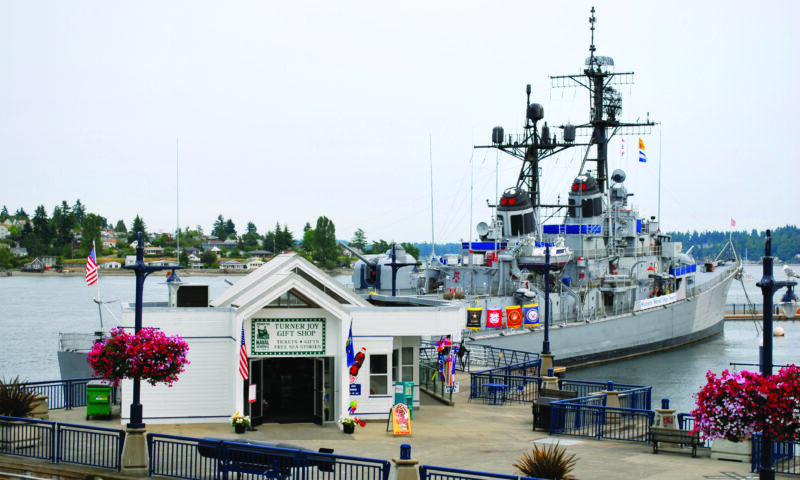Naval museums, some of them on retired ships, eagerly await and welcome visitors. Not to mention any and all support that helps keep floating history shipshape.
Roughly 120 Navy vessels are official historic landmarks in the United States. And naval ship museums, some of them housed in retired warships and submarines, are helping preserve that maritime and military heritage.
Two such places are a relatively short drive or a ferry ride to the Kitsap Peninsula, where Puget Sound Navy Museum in Bremerton and Naval Undersea Museum in Keyport are doing their part to educate current and future generations by bringing to life the historic roles of vessels above and below the waves.
Maintaining and operating naval museums often falls to veterans’ or community groups with minimal or no government funding. The museums rely on the generosity and support of their members and the public.
In return, visitors get thoroughly indoctrinated in floating history such as the USS Turner Joy, anchored at Bremerton’s waterfront near the Puget Sound Navy Museum (PSNM). The 66-year-old destroyer, decommissioned by the Navy in 1982, was involved in the Navy’s first sea battle in the Vietnam War in 1964. It now is a Navy museum ship. (Information about tours is at ussturnerjoy.org and 360-792-2457.) Recent temporary exhibits included one about patrol boats that were used in Puget Sound to chase alcohol smugglers during the prohibition and for guarding coastlines, ports, and rescues.
PSNM opened in 1954 in a different Bremerton than the 6,049 square-feet building it now occupies near Puget Sound Naval Shipyard and a state ferry terminal.
Naval Undersea Museum, a few miles north in Keyport and affiliated with PSNM, sits next to a branch of the Naval Undersea Warfare Center, a research, testing and engineering arm of the Navy. Museum artifacts and exhibits include torpedoes (“Torpedo Town” is a nickname for Keyport), a simulated submarine control room, a hulking portion of an actual former sub’s hull, and a deepwater rescue submersible that was used in the movie “The Hunt for Red October.” It’s all backed by a non-profit foundation and its members who provide financial and organizational support .
Floating-ship museums, such as the Turner Joy, include famous ships like the USS Midway and USS Enterprise. Others are lesser-known but still storied. One is the USS Red Oak. Moored in Richmond, Calif., 16 miles north of San Francisco, it’s one of the last surviving World War II Victory Ships that were built on an emergency basis to carry vital supplies and troops to all theaters of war.
Well-known or not, all floating-ship and land-based naval museums “have a responsibility to future generations to preserve historic ships and to raise awareness,” said Fred Klink, who heads a committee running the Red Oak.
While naval museums need financial backing from individuals, organizations and corporations, Klink and other advocates note there are some simple ways virtually anyone can support the museums. One of the easiest ways is to visit them, buying a ticket if admission is charged (PSNM and Naval Undersea are free) and affirming their important roles in preserving history.
Another way is to volunteer for leading tours or other assistance such as working in museum stores.
Source: Brandpoint contributed to this report.
